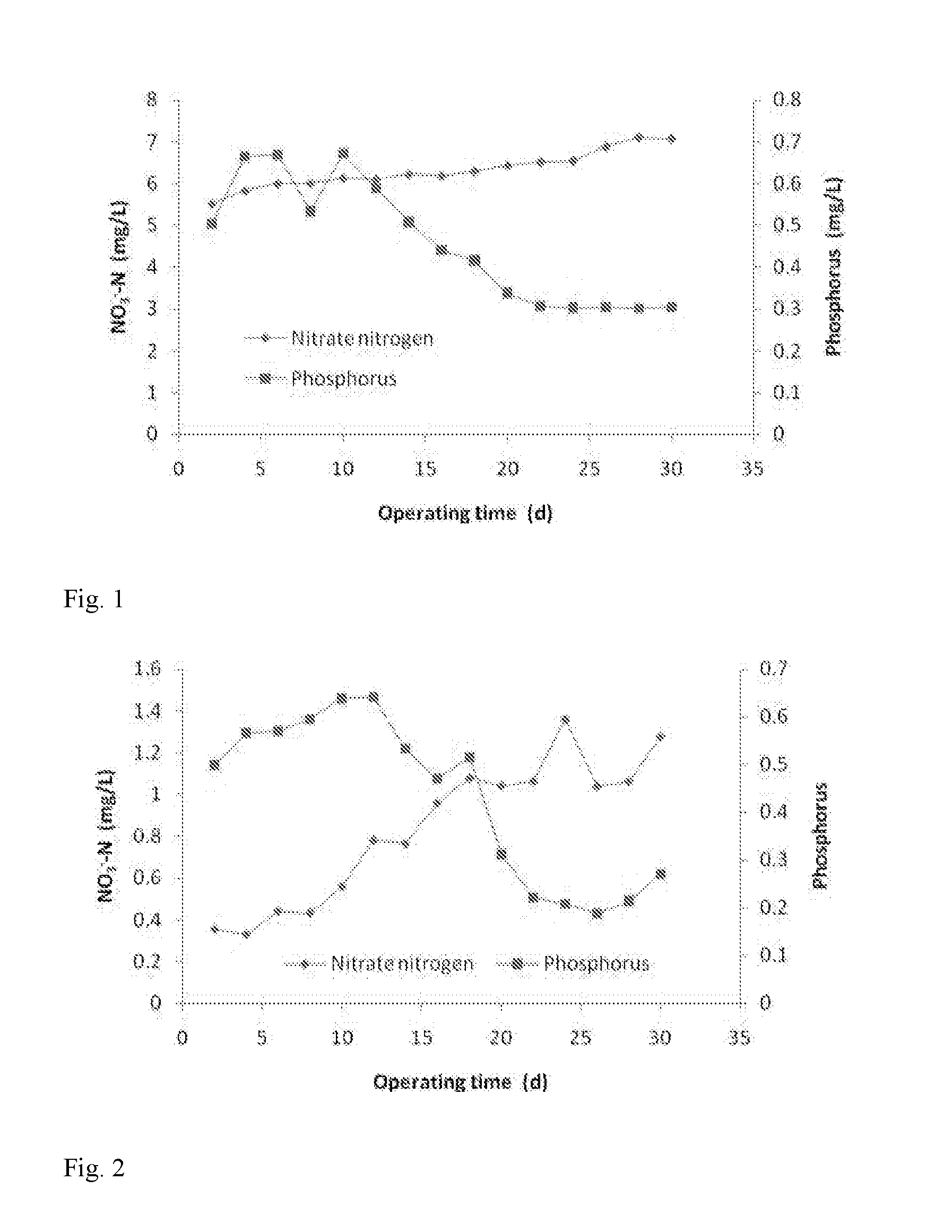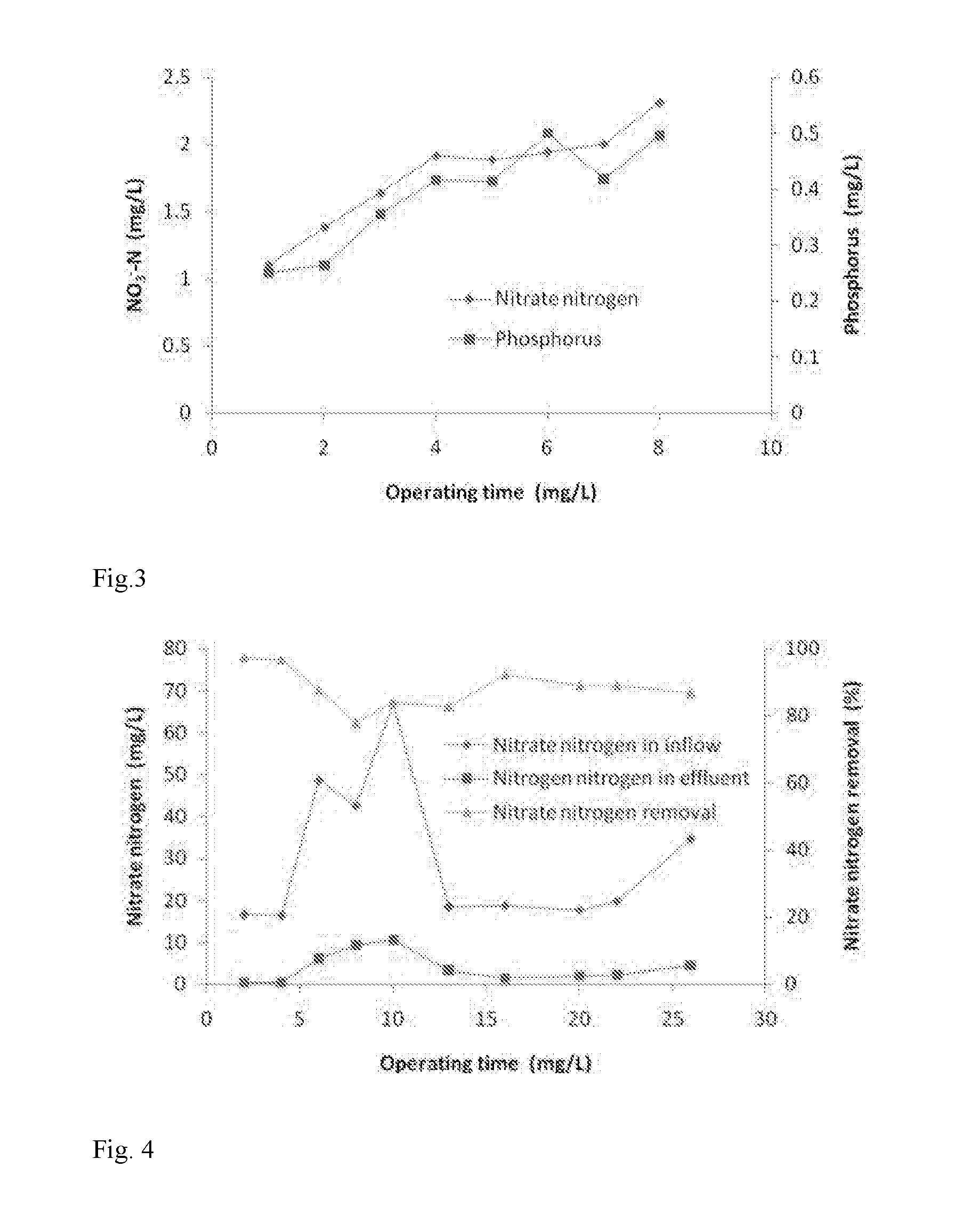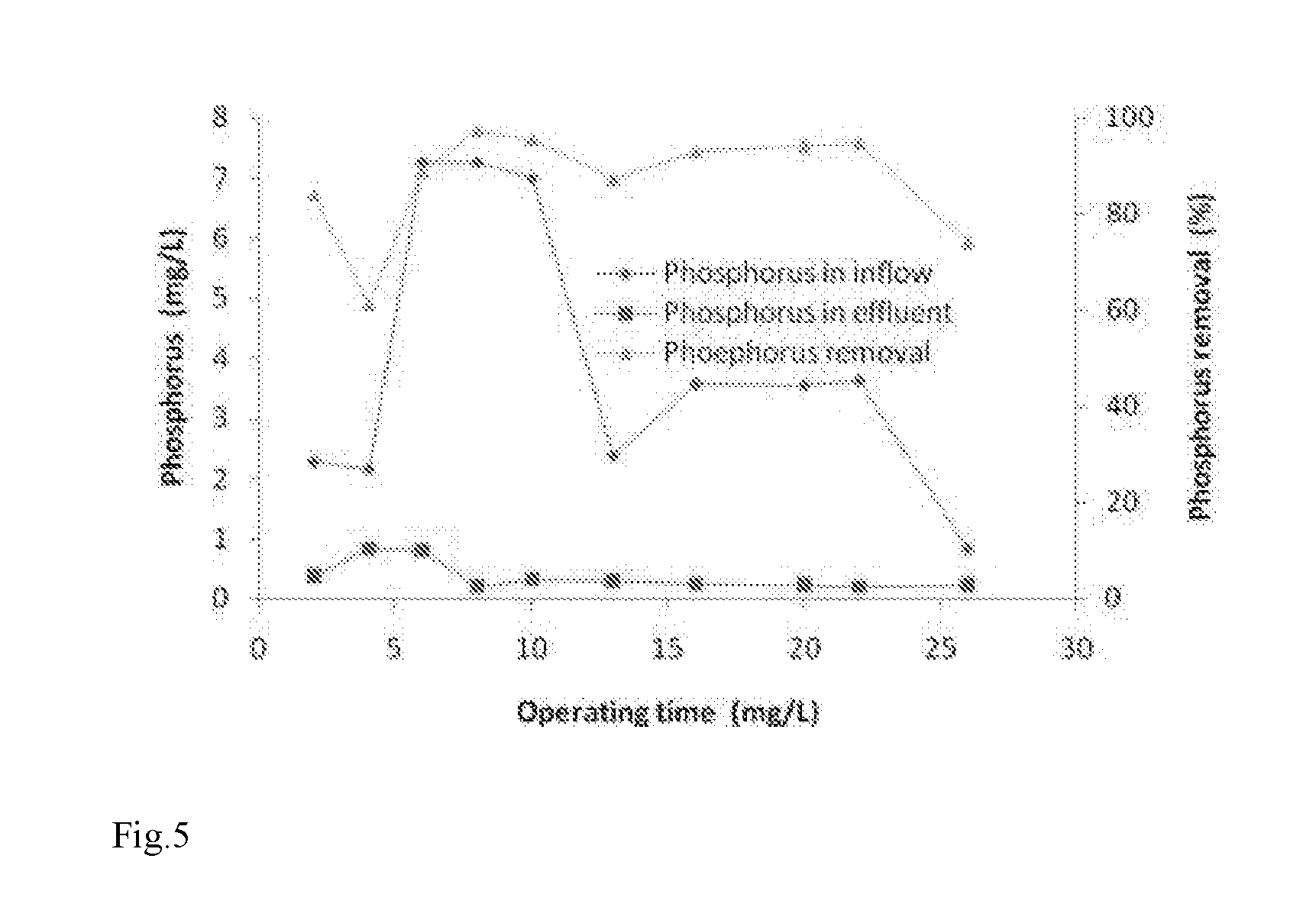Natural pyrrhotite biological filter and method for utilizing same to synchronously remove nitrate-nitrogen and phosphorus from water
a biological filter and natural pyrrhotite technology, applied in biological water/sewage treatment, water treatment compounds, water treatment parameter control, etc., can solve the problems of hardly achieving desirable nitrogen and phosphorus removal effect, long whole water treatment process, and difficult water treatment process, etc., to achieve the effect of convenient and convenient access
- Summary
- Abstract
- Description
- Claims
- Application Information
AI Technical Summary
Benefits of technology
Problems solved by technology
Method used
Image
Examples
embodiment 1
[0032]The water under test is simulated wastewater prepared with tap water, potassium dihydrogen phosphate and potassium nitrate, wherein the concentrations of major pollutants are: NO3−—N 27 mg / L and PO43−—P 6 mg / L, with the water temperature at 18° C.; the treatment steps are as follows:
[0033](1) Preparation of the packing material and construction of the biofilter: prepare pyrrhotite in the granular form with the grain size between 2-20 mm; pack the granular pyrrhotite in the reactor, and then wash the rector with clean water; stop the washing process when the effluent from the water outlet turns nearly colorless; measurement indicates that the pH of the washing water is 6; the reactor is designed in the form of a cylindrical column with the height-diameter ratio of 3:1; a water inlet is designed on the bottom and a water outlet on the top; a cone is connected to both ends of the column in order to realize even distribution of water inflow and outflow;
[0034](2) Start-up of the bi...
embodiment 2
[0036]Same as Embodiment 1, with exceptions as follows: in Step (2), the hydraulic retention time of the mixed nutrient solution during the start-up of the biofilter is adjusted to 24 hours; pump the simulated wastewater into the reactor that has been started up through Step (2), adjust the hydraulic retention time to 24 hours, and operate the biofilter for a month; take samples for analysis every two days, with the results shown in FIG. 2. The concentrations of nitrate-nitrogen and phosphate phosphorus in the final effluent maintains at 1.13 mg / L and 0.22 mg / L, respectively, while the removal rate of nitrate-nitrogen and phosphorus reaches 95.8% and phosphorous 96.3%, respectively.
embodiment 3
[0037]Same as Embodiment 1, with exceptions as follows: in Step (2), the hydraulic retention time of the mixed nutrient solution during the start-up of the biofilter is adjusted to 20 hours; the reactor is designed in the cuboid form, with the length-width ratio of 3:1.
[0038]The water under test is simulated wastewater prepared with tap water, potassium dihydrogen phosphate and potassium nitrate, wherein the concentrations of major pollutants are: NO3−—N 28 mg / L and PO43−—P 12 mg / L, with the water temperature at 18° C.; pump the simulated wastewater into the reactor that has been started up in Step (2), adjust the hydraulic retention time to 24 hours, and operate the biofilter for a month; take samples for analysis every two days, with the results shown in FIG. 3. The concentrations of nitrate-nitrogen and phosphate phosphorus maintain at 2.03 mg / L and 0.47 mg / L, respectively, while the removal rates of nitrate-nitrogen and phosphorus reach 92.8% and 96.1%, respectively.
PUM
| Property | Measurement | Unit |
|---|---|---|
| grain size | aaaaa | aaaaa |
| hydraulic retention time | aaaaa | aaaaa |
| hydraulic retention time | aaaaa | aaaaa |
Abstract
Description
Claims
Application Information
 Login to View More
Login to View More - R&D
- Intellectual Property
- Life Sciences
- Materials
- Tech Scout
- Unparalleled Data Quality
- Higher Quality Content
- 60% Fewer Hallucinations
Browse by: Latest US Patents, China's latest patents, Technical Efficacy Thesaurus, Application Domain, Technology Topic, Popular Technical Reports.
© 2025 PatSnap. All rights reserved.Legal|Privacy policy|Modern Slavery Act Transparency Statement|Sitemap|About US| Contact US: help@patsnap.com



